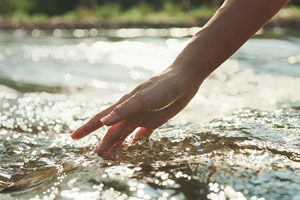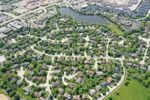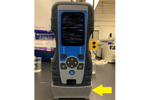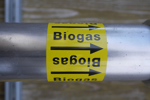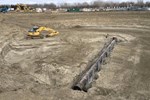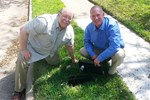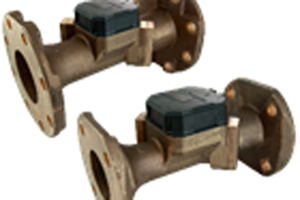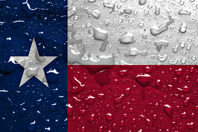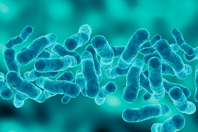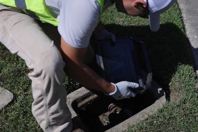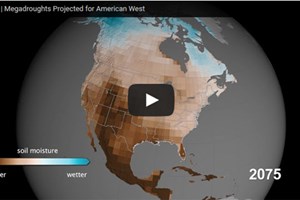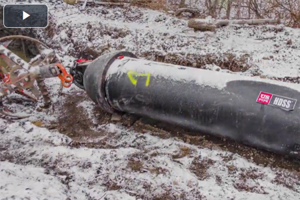DRINKING WATER
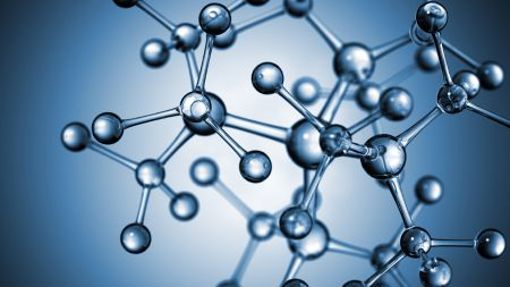 Custom Tank Designs That Actively Manage PFAS Mass Transfer Zone (MTZ) — And Why It Matters More Than Ever
Custom Tank Designs That Actively Manage PFAS Mass Transfer Zone (MTZ) — And Why It Matters More Than Ever
As utilities prepare for the pending 4-ppt PFAS drinking water MCL, many are discovering that legacy lead/lag designs—workhorses for decades when treating contaminants in the ppm and ppb range—simply are not optimized for the parts per trillion-level (ppt) precision PFAS demands.
DRINKING WATER CASE STUDIES AND WHITE PAPERS
-
AMI And Leak Detection Stops The Flow Of Non-Revenue Water
How are water utilities getting the deluge of real and apparent water losses under control? The City of Elmhurst, a stately suburb west of Chicago with a population of about 46,000 residents, is a case study on how one municipality took on the issue.
-
Municipal Water Reuse Done Right: Lessons In Efficiency
California water reuse program provides multiple benefits, serving as a model for other municipalities.
-
Water You Waiting For? Analyze Multiple Water Samples Simultaneously With A New Field Device
Whether it’s checking the health of a stream or a drinking water supply, water testing is performed in a variety of industrial, consumer, and applied research settings to measure water quality and chemistry. Understanding the quality of water (its features such as pH, salinity, or dissolved oxygen) and its chemistry (the presence of compounds like chlorine, ammonia, or nitrogen) is often accomplished with specialized, laboratory-based equipment and systems or field sampling methods.
-
Distillery Wastewater Byproducts Fuel Sustainability
For distilleries, high levels of biochemical oxygen demand (BOD), nitrogen, total dissolved solids (TDS), and total suspended solids (TSS) put extra pressure on optimal biological treatment requirements. Here are some techniques that can help distillers put a little extra money in the bank while meeting the challenges of environmental discharge requirements.
-
AMERICAN Zinc, V-Bio Protect Iron Pipe Against Aggressive Soils In Bismarck, North Dakota
More than 6,800 cubic yards of structural concrete are being used in the construction of a new Trickling Filter and Trickling Filter Pump Station in Bismarck, North Dakota. These structures are being built well below the area’s water table, and the more than 6,800 cubic yards of concrete will protect them against the effects of Mother Nature.
-
Assessing Best Practices For Water Distribution Systems
What are the best practices to help water utilities maintain delivery of safe, high-quality drinking water?
-
Two-Way Fixed Network Helps Texas Community Become 'City Of The Future'
In January 2014, the city of Meadows Place, Texas, became the first city in Fort Bend County to fully convert to an Advanced Metering Infrastructure (AMI) fixed-network system. At the same time, the city also implemented a complete meter change-out for its 1,600 customers. Both projects represent large initiatives for the self-proclaimed “little city” with a population of 4,600 citizens.
-
Hydra-Stop Solutions Isolate Damaged Valve During Water Main Replacement
The Village of Covington, Ohio had an ambitious 90-day project to replace the water main, taps, sewer main, laterals, and storm sewer through the center of town. Unfortunately, on day one, an unknown water service line was snagged and the top half of an 8” valve blew off, causing water to shoot 10”–12” out of the street.
-
Denver Water Sets The Stage For Sweeping LSL Replacements, Partners With 120Water For Modern Sample Management
Learn how Denver Water is streamlining their pre/post LSL replacement water sampling and pitcher/filter distribution programs with 120Water! As more systems begin verifying and prioritizing replacement of lead service lines, Denver Water serves as a great example of what it means to provide faster and seamless results to residents.
-
Designing For Peaks And Valleys In Seasonal Communities With MBR Technology
Wastewater flows in seasonal resorts are highly volatile. Learn how to stabilize biological treatment against sudden peak demands and low-flow off-seasons, ensuring continuous compliance and securing a high-quality water source for reuse.
DRINKING WATER APPLICATION NOTES
-
Protecting Pumps From Dead Head Conditions4/6/2017
The C445 motor management relay offers the most configurable protection options in the industry, with features specifically designed to protect critical pumps from costly damages due to dead-head and other underloaded or starved pump conditions.
-
Determination Of EN15662:2008 - Determination Of Pesticide Residue In Food Of Plant Origin, By An Automated QuEChERS Solution9/24/2014
Pesticide residue laboratories are required to undertake analyses of an ever increasing number of samples. The analyses typically involve use of multi-residue methods (both GC-MS and LC-MS) to test for over 500 pesticide residues.
-
Application Note: Water Flows From The Golden Hills Of California1/20/2010Each morning John Johnson drives the few miles from his smalltown home in northern California to the Center at Pardee Reservoir. Nestled among the foothills of the Sierra Nevada mountain range, the reservoir is a long 100 miles away from San Francisco Bay. By YSI
-
Application Note: YSI Water Quality Monitoring Buoys Help Connecticut DOT Protect The Housatonic River12/27/2005When replacement of the Sikorski Bridge spanning the Housatonic River was authorized, Paul Corrente and the Connecticut Department of Transportation (CT-DOT) set about the design and development of a water quality monitoring program to monitor the contractor’s in-water activities to insure full protection of the river from perturbation
-
Improved Efficiencies In TOC Wastewater Analysis For Standard Method 5310B And EPA Method 41510/16/2014Total organic carbon (TOC) measurement is of vital importance to the operation of water treatment due to organic compounds comprising a large group of water pollutants. TOC has been around for many years, and although it is a relatively simple analysis in theory, operational efficiency is paramount.
-
Municipal Real-Time Water Quality Monitoring9/24/2020
We arm municipalities with actionable data necessary to make informed decisions about water quality in their communities
-
Active Energy Control – Energy Reductions Of Up To 10% Above Standard Drives4/1/2017
Energy costs continue to increase. At the same time, there is increased pressure to reduce utility bills without sacrificing operations or comfort.
-
Immediate pH Correction For Fluctuating Flow2/19/2014
In a number of water, wastewater and industrial process applications, pH is one of the most critical and highly sensitive analytical measurements. Examples of critical pH applications include: Reverse Osmosis (RO) systems in which a controlled feed of caustic solution is typically added to the feed stream in order to convert a portion of dissolved carbon dioxide into bicarbonate precipitate allowing for removal by the RO membrane. By Rafik H. Bishara, Steve Jacobs, and Dan Bell
-
Bringing Efficiency And New Confidence To BOD₅ Analysis2/4/2013
Biochemical Oxygen Demand (BOD) analysis is the test everyone loves to hate—and for compelling reasons.
-
Drinking Water Testing By Ion Chromatography Using Ultrapure Water9/29/2022
This application note demonstrates the suitability of ultrapure water produced by a Milli-Q IQ 7000 water purification system for the IC analyses of inorganic ions and DBPs in drinking water.
LATEST INSIGHTS ON DRINKING WATER
-
Beaverton Water Division’s transition to Kamstrup AMI and acoustic leak detection is modernizing meter reading, reducing infrastructure costs, improving leak identification, and streamlining operations as deployment progresses.
-
Learn how the Mustang Bayou Service Area (MBSA) Water System Improvements project delivered a fast-tracked, multi-phase response to rapid development and critical capacity challenges in one of the Missouri City’s fastest-growing regions.
-
As water systems grow more complex and climate patterns shift, Legionella is emerging as one of the most persistent and underestimated risks in the built environment. The threat to public health from Legionnaires' disease will likely further escalate unless decisive action is taken.
-
The city of Jackson faced a water crisis that went beyond the tap. What began as an ambitious plan to modernize its water metering infrastructure in 2014 became a logistical and financial nightmare, costing the city millions in lost revenue and declining public trust. Metering as a Service (MaaS) offered the city an alternative option.
-
There has been an abundance of funding available to address the estimated 9.2 million lead service lines currently deliver drinking water to homes, businesses, schools, and unsuspecting citizens throughout the United States. So it is disheartening to realize that millions of lead water lines are still delivering water to citizens.
-
This Q&A follows the Webinar: Beaverton's New AMI Solution Checks Every Box: Operations, Billing, Service, & Savings hosted by Water Online on October 21, 2025. The webinar featured the leadership team from Beaverton Water Division as they discussed lessons learned across operations, billing, and customer service, offering a 360-degree perspective on implementing and managing an AMI system.
ABOUT DRINKING WATER
In most developed countries, drinking water is regulated to ensure that it meets drinking water quality standards. In the U.S., the Environmental Protection Agency (EPA) administers these standards under the Safe Drinking Water Act (SDWA).
Drinking water considerations can be divided into three core areas of concern:
- Source water for a community’s drinking water supply
- Drinking water treatment of source water
- Distribution of treated drinking water to consumers
Drinking Water Sources
Source water access is imperative to human survival. Sources may include groundwater from aquifers, surface water from rivers and streams and seawater through a desalination process. Direct or indirect water reuse is also growing in popularity in communities with limited access to sources of traditional surface or groundwater.
Source water scarcity is a growing concern as populations grow and move to warmer, less aqueous climates; climatic changes take place and industrial and agricultural processes compete with the public’s need for water. The scarcity of water supply and water conservation are major focuses of the American Water Works Association.
Drinking Water Treatment
Drinking Water Treatment involves the removal of pathogens and other contaminants from source water in order to make it safe for humans to consume. Treatment of public drinking water is mandated by the Environmental Protection Agency (EPA) in the U.S. Common examples of contaminants that need to be treated and removed from water before it is considered potable are microorganisms, disinfectants, disinfection byproducts, inorganic chemicals, organic chemicals and radionuclides.
There are a variety of technologies and processes that can be used for contaminant removal and the removal of pathogens to decontaminate or treat water in a drinking water treatment plant before the clean water is pumped into the water distribution system for consumption.
The first stage in treating drinking water is often called pretreatment and involves screens to remove large debris and objects from the water supply. Aeration can also be used in the pretreatment phase. By mixing air and water, unwanted gases and minerals are removed and the water improves in color, taste and odor.
The second stage in the drinking water treatment process involves coagulation and flocculation. A coagulating agent is added to the water which causes suspended particles to stick together into clumps of material called floc. In sedimentation basins, the heavier floc separates from the water supply and sinks to form sludge, allowing the less turbid water to continue through the process.
During the filtration stage, smaller particles not removed by flocculation are removed from the treated water by running the water through a series of filters. Filter media can include sand, granulated carbon or manufactured membranes. Filtration using reverse osmosis membranes is a critical component of removing salt particles where desalination is being used to treat brackish water or seawater into drinking water.
Following filtration, the water is disinfected to kill or disable any microbes or viruses that could make the consumer sick. The most traditional disinfection method for treating drinking water uses chlorine or chloramines. However, new drinking water disinfection methods are constantly coming to market. Two disinfection methods that have been gaining traction use ozone and ultra-violet (UV) light to disinfect the water supply.
Drinking Water Distribution
Drinking water distribution involves the management of flow of the treated water to the consumer. By some estimates, up to 30% of treated water fails to reach the consumer. This water, often called non-revenue water, escapes from the distribution system through leaks in pipelines and joints, and in extreme cases through water main breaks.
A public water authority manages drinking water distribution through a network of pipes, pumps and valves and monitors that flow using flow, level and pressure measurement sensors and equipment.
Water meters and metering systems such as automatic meter reading (AMR) and advanced metering infrastructure (AMI) allows a water utility to assess a consumer’s water use and charge them for the correct amount of water they have consumed.


